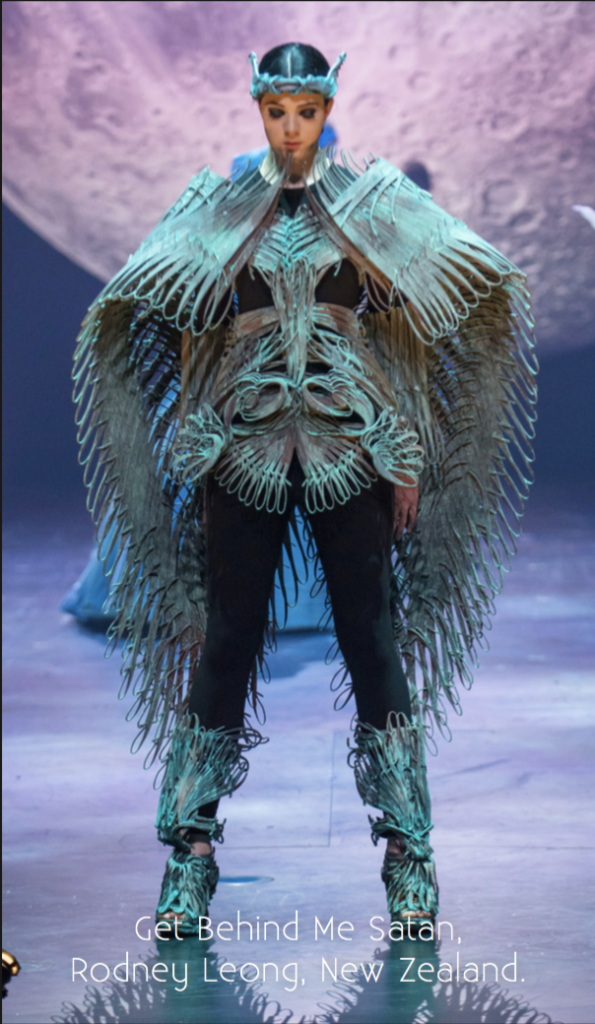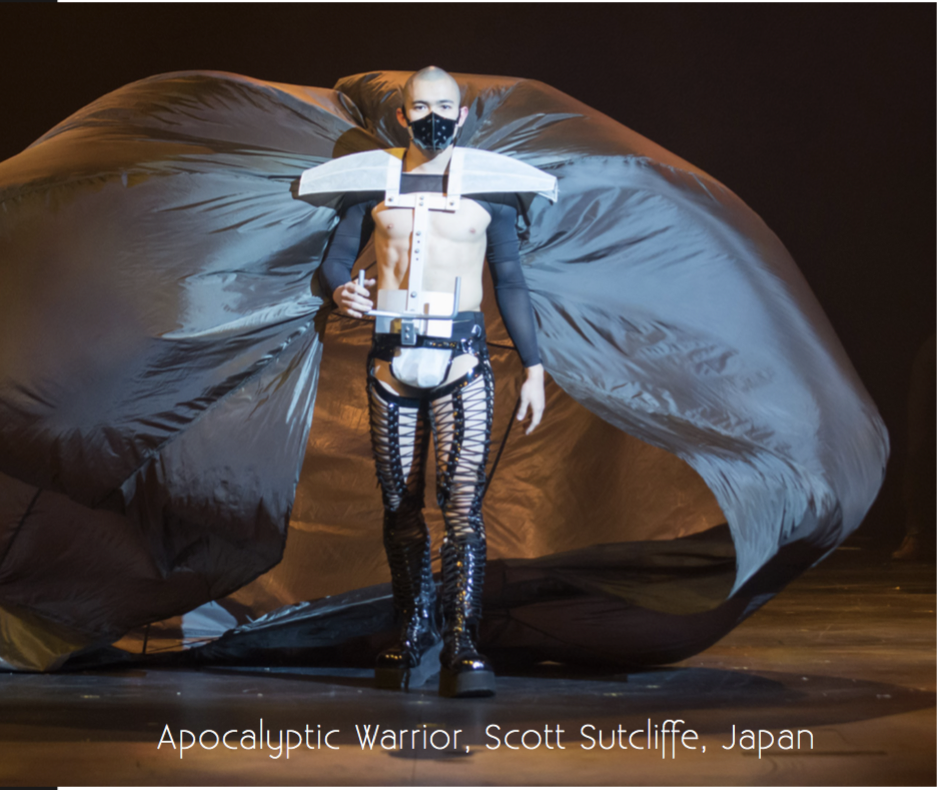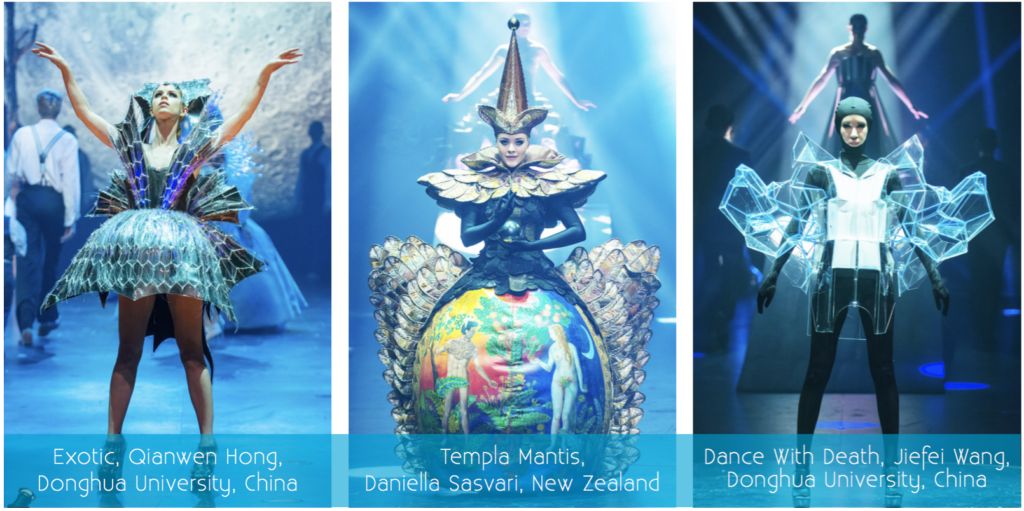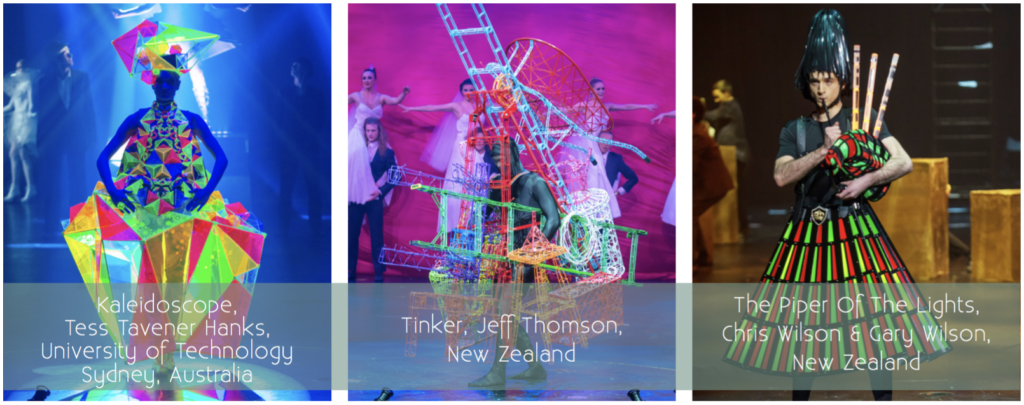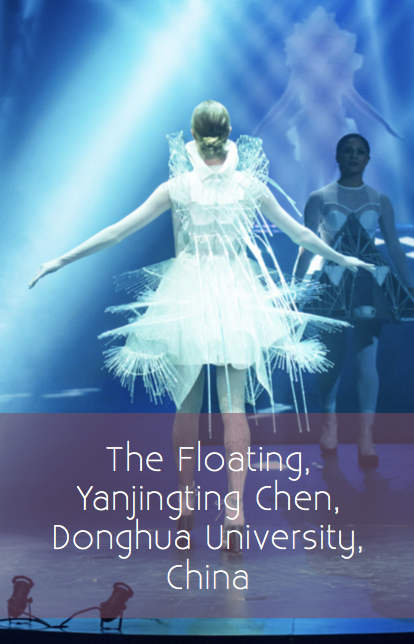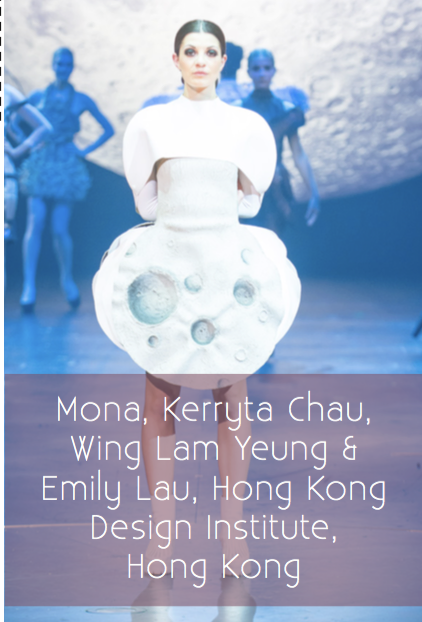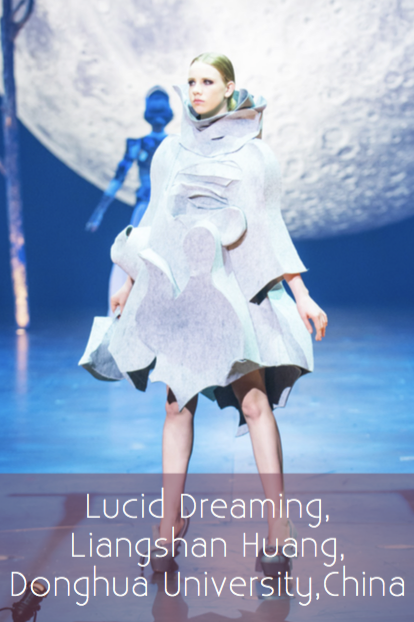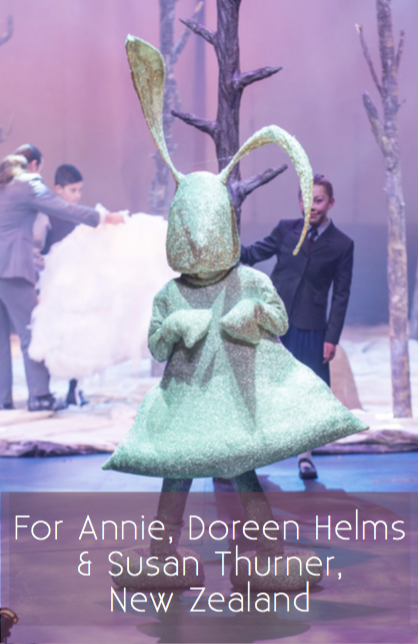News
18 Nov 2015
WOW
Subscribe to CX E-News
Each spring, the World of Wearable Art Awards Show (WOW) takes centre stage at Wellington’s TSB Bank Arena. The show has been described as one part fashion show, one part Cirque Du Soleil and one part Eurovision.
Over 100 garments from 130 international designers are transformed and showcased on stage in a distinctive two hour theatrical extravaganza, with stunning sets, soundscapes, dance, lighting and world-class choreography.
WOW is New Zealand’s single largest arts show, and this season’s production was the competition’s 27th show. Dame Suzie Moncrieff created the WOW concept in 1987 to challenge designers to take “art off the wall and onto the human form”. Designers come from all occupations, from many different backgrounds and from around the world. WOW gives designers the opportunity to be innovative and original, while not being bound by the constraints of commercialism. The only limit is imagination.
Usually a basketball stadium, the sporting arena is transformed into a theatrical stage for a twelve night period. This year was yet another sell-out, as nearly 50,000 show-goers from all over the world witnessed the breathtaking, spectacular of art, theatre, dance, and music, bringing to life 107 incredible designs. The high-energy show told a powerful visual story, around the top designs chosen from several hundred as competitors took to the stage.
AUDIO
“The audio side of WOW is pretty basic,” commented Andy Craig of Western Audio Engineering who supplied the audio equipment. “It’s more of a visual extravaganza than an audio feast.
“Most of the show was playback, with a small live component. The wireless systems were Shure UR and the capsules used for the wireless were DPA4061 and DPA d:fine. We also had one handheld that used a DPA d:facto capsule. DI’s were by Radial, other wired microphones were the usual offenders.”
The loudspeakers were d&B audiotechnik Q Series and E-Series with Dante over fibre using Teqsas switches for signal reticulation.
The playback and time code systems were provided by Shane Clayton, the sound designer for the show.
Shane used a Show Cue System control program, a PC based alternative to Q-Lab. Shane and Andy have worked together on many previous WOW shows and over the years, they have built a trust in each other.
“When it comes to gear such as PA, I leave the decisions to Andy as he is highly regarded in the industry and he hasn’t put me wrong so far!” remarked Shane. “Each year we have been at this, I have seen an improvement in sound and considering the venue is basically a tin shed, what he has managed to achieve is remarkable. I figure if that’s what Andy has given me, I have no reason to complain.”
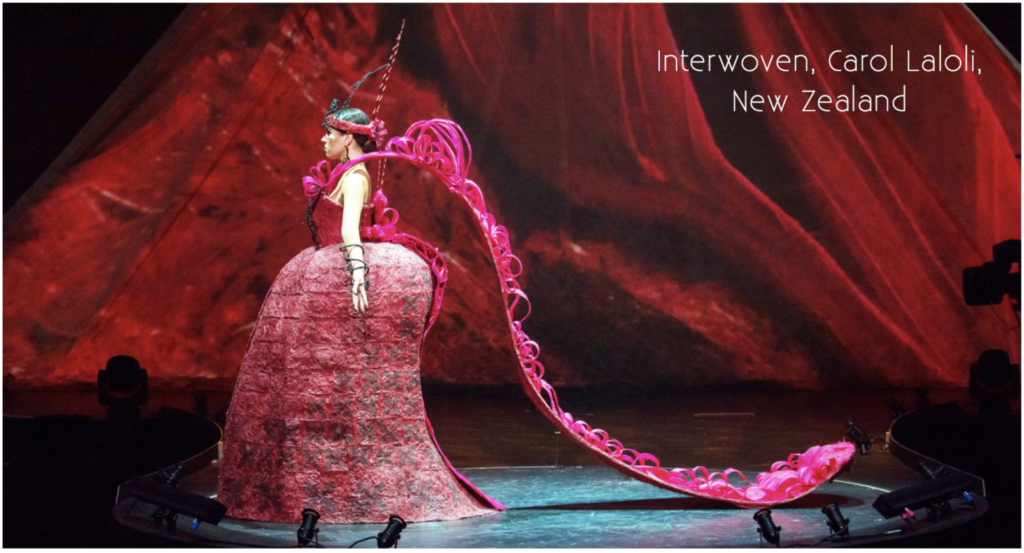
Whilst flying subs can be great for staging and stage management, Shane preferred to place the subs below the stage to achieve a rich spread of sound.
“I know that if we start looking at wave lengths of subs then it doesn’t matter where they are as the sound is going to penetrate everywhere, but if you have moments like a volcano erupting, which we did this year, the sub sounds exploding from stage level has a whole different feel,” he said.
Shane has been experimenting with what he describes as ‘the spread of sound’ rather than surround sound, with the main sound generated centrally with snippets of sound emanating from all around. Although not able to implement it this year, he hopes to in the near future.
“We trialed it beneath a seating block of about 600 at this venue and I estimate at least 90% of the audience would have benefited from this spread of sound as opposed to a stereo system,” Shane commented. “The WOW® organization were keen to implement it this year but I felt we weren’t quite ready yet, so maybe next year.”
This year’s live component was simple with just a few live microphones and radio microphones plus a live band for preshow and a couple of show sections.
Unfortunately some of the material for playback was not prepared properly for the venue and Shane had to spend considerable time sourcing and replacing compressed files that had been introduced into the edit.
“There were a significant number of files that were compressed into an MP3 format which when run the venue’s PA system, sounded awful,” said Shane. “All the soul of the music had gone especially when we had gone to the trouble of having four big subs under the stage and were losing everything below 60Hz. It was like a severe high pass filter over those compressed files and everything over 16 kilohertz again just started tailing off and so you lost any of the sparkle.”
This year’s production was the first to have a significant amount of material composed for the show which was given to Shane at 44.1 kilohertz which meant he had to frustratingly degrade the whole system, even the fibre components and amplifiers, down to 44.1 kilohertz.
The Show Cue System enables sound effect and music track playback for live theatre, and for backing track playback and automation for live music productions. Shane has been a fan of it for years mainly favouring it as it is PC based.
“I have two distinct playback systems and one is quite old fashioned,” added Shane. “I have a couple of Fostex 24 track hard disk players in the form of the D2424LV. They have the time code option built into them which is handy. The bulk of the show is handled by those two machines. They have full redundancy so they both start at the same time and if one was to fail, the other automatically kicks in within 50 milliseconds. The Show Cue System triggers both units to start and works very well.”
The Show Cue System also handles scene changes on the Yamaha PM5d control console, sometimes simultaneously with the Fostex players being triggered. Shane also uses the Show Cue System for sound effects, announcements and pre/post show music, but he is not convinced to trust a whole show to a computer when the Fostex players over the years have been so reliable.
Shane has developed a proprietary system of distribution with an isolated balanced system for time code, with distribution amplifiers specifically built for the show that can do distances up to 1 kilometre without loss of signal or risk of interference.
“We did this after a show a few years back when a TV cameraman left half way through the show and he had an audio feed which he disconnected resulting in a huge hum through the system and all the time clocks were disturbed,” explained Shane. “After that I decided there was no way that could happen again especially as we became more reliant on time code.”
LIGHTING
The large stage has five perimeter revolves, an upstage entrance area and a truss flown rig over the top of it suspended from the catwalks. The truss, by Global Truss, roughly follows the perimeter of the stage being a five-sided configuration with spokes radiating out from the centre to follow the arms of the stage. The stage is elevated 1.5 metres above the floor with much traffic and gear underneath it coming up through hatches and traps.
Paul Jackson has been the show’s lighting designer for a few years with Wellington based MJF Lighting supplying the gear and crew. Rob Cuddon programs the show.
“The show has a number of different sections – a combination of show entertainment elements and fashion parade style presentations,” explained Paul. “Normally there will be a performance occurring centre of the stage and then walking through that performance and the perimetre revolves are the garments. The whole purpose of the show is to be able to see the garments so I need to deliver clean, bright light to those revolves with follow spot support whilst the centre can be more theatrical.”
The rig contains around 100 moving lights including Martin MAC Viper Profiles and Performances, MAC700 Washes and Profiles, MAC Auras and Clay Paky Sharpys.
“There’s also a fair bit of LED RGBW gear and a base PAR can rig to give me control of some white light if needed,” said Paul. “The Martin MAC Auras provide perimeter floor lighting along with PAR16’s delivering perimetre wash. Often the garments have specific lighting requirements or lighting built into them, some require UV light so for that we have some ShowPro Hex Bars on the revolves.”
One section of this year’s show that Paul is particularly proud of was lit entirely by roving Sharpy beams through smoke. Garments would appear through the shadows to be more clearly lit once on the revolves.
“We sometimes use the Sharpys in gobo mode for a static look but this year they were more animated,” commented Paul. “Conventionals were Selecon Pacifics, PAR cans and PAR16’s.”
This year Paul decided to use seated, suspended follow spots, rather than from stands on the catwalks, to work in better with the low hung projectors shooting beneath the trusses.
The control set up was a MA Lighting MA2 light, MA2 command wing, MA Nodes and Avolites dimmers.
First published in CX Magazine (November, 2015)
Subscribe
Published monthly since 1991, our famous AV industry magazine is free for download or pay for print. Subscribers also receive CX News, our free weekly email with the latest industry news and jobs.


